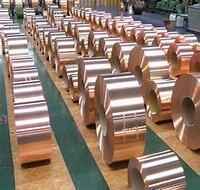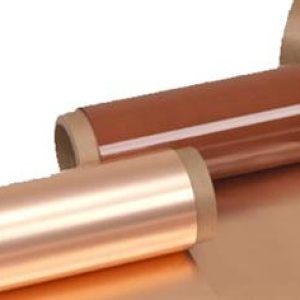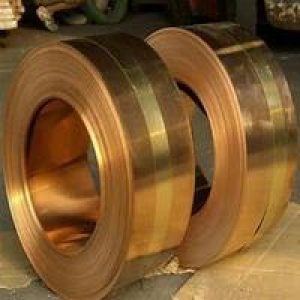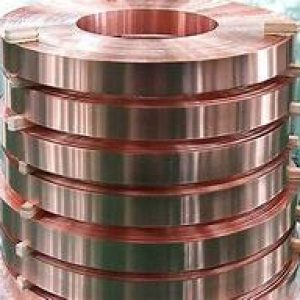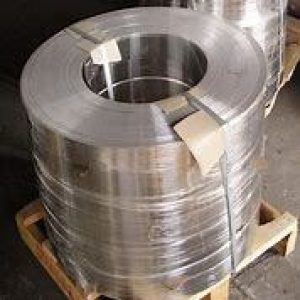Overview of Copper Flat Bus Bar / Copper Rod / Copper Bar
Copper strip refers to thin, flat, and flexible sheets or strips made from pure copper or copper alloys. Known for their excellent electrical conductivity, thermal conductivity, formability, and resistance to corrosion, copper strips are widely utilized in applications where these properties are of paramount importance. The thickness of copper strips can vary significantly, usually ranging from a few millimeters down to extremely thin foils, while widths can be tailored to suit specific application requirements. Copper strips are commonly manufactured through rolling processes, starting from copper ingots or thicker sheets and progressively reducing their thickness.
Features of Copper Flat Bus Bar / Copper Rod / Copper Bar
-
High Conductivity: Like copper rods, copper strips offer excellent electrical and thermal conductivity, making them ideal for electrical and electronic components.
-
Formability: Copper strips can be easily bent, folded, or shaped without cracking, which is crucial for complex manufacturing processes.
-
Corrosion Resistance: Copper naturally forms a protective patina that inhibits further corrosion, ensuring its longevity in various environments.
-
Wide Range of Alloys Available: Copper can be combined with other metals to create strips with enhanced properties, such as increased strength, wear-resistance, or specialized thermal and electrical characteristics.
-
Flexibility: The thin and flexible nature of copper strips allows them to conform to curved surfaces or tight spaces, useful in wiring harnesses and compact electronic devices.
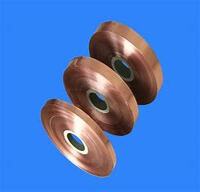
(Copper Flat Bus Bar / Copper Rod / Copper Bar)
Parameters of Copper Flat Bus Bar / Copper Rod / Copper Bar
Copper flat bus bars, copper rods, and copper bars are essential components in electrical systems due to their excellent electrical conductivity, durability, and resistance to corrosion. These materials play a critical role in various applications, from power distribution to industrial machinery and electronic devices.
A copper flat bus bar is a piece of copper in the shape of a flat rectangular bar, designed for high current applications. Its dimensions can vary widely depending on the specific application, but typically, they range from a few millimeters to tens of centimeters wide and thick, with lengths up to several meters. The surface finish is often smooth, polished, or coated to improve conductivity and prevent corrosion.
Copper rods, on the other hand, are cylindrical pieces of copper that are usually straight and have a uniform cross-section throughout their length. They are available in various diameters and lengths, catering to different needs. Copper rods are used in a variety of applications, such as electrical wiring, cable manufacturing, and as components in electrical machines like motors and transformers.
Copper bars are similar to rods but can have different shapes and cross-sections, including square, rectangular, or irregular shapes, depending on the application requirements. They are commonly used in construction for structural supports, as well as in electrical systems for their superior thermal and electrical properties.
When specifying copper flat bus bars, copper rods, or copper bars, several parameters must be considered:
1. **Material Type**: Copper is classified into several types based on its composition, including pure copper (Cu), copper alloys (e.g., CuNi, CuAlNi), and copper-clad steel (CCS). The choice depends on factors such as cost, availability, and the specific application’s requirements.
2. **Conductivity**: This is a crucial property, as it determines how efficiently the material conducts electricity. Pure copper has a very high electrical conductivity, making it an ideal choice for high-current applications.
3. **Tensile Strength**: This parameter indicates the material’s ability to withstand tension without breaking. It is important for ensuring the structural integrity of components that may experience mechanical stress.
4. **Corrosion Resistance**: Copper is naturally resistant to corrosion, but the type and extent of protection required depend on the environment in which the component will operate. For example, marine environments may require additional coatings or alloys to enhance corrosion resistance.
5. **Temperature Rating**: The maximum temperature at which a copper component can operate without degrading its performance or safety. This is particularly relevant for high-temperature applications.
6. **Electrical Properties**: In addition to conductivity, other electrical properties such as resistivity and magnetic permeability should be considered, especially in applications where these properties impact system performance.
7. **Surface Finish**: The surface quality can affect the material’s performance, particularly in terms of electrical contact resistance and wear resistance.
8. **Manufacturing Specifications**: Parameters such as tolerance, surface roughness, and dimensional accuracy are crucial for ensuring compatibility with other components in the system.
9. **Certification and Standards Compliance**: Depending on the application, the copper product may need to meet specific industry standards or certifications, such as UL, CE, or ISO.
In conclusion, copper flat bus bars, copper rods, and copper bars are versatile materials with a wide range of applications in the electrical industry. Careful consideration of their parameters ensures optimal performance, reliability, and safety in various systems.

(Copper Flat Bus Bar / Copper Rod / Copper Bar)
Applications of Copper Flat Bus Bar / Copper Rod / Copper Bar
-
Electronics Manufacturing: Copper strips are used in printed circuit boards (PCBs), connectors, transformers, and inductor coils due to their high conductivity and ease of processing.
-
Automotive Industry: They are integral to vehicle wiring harnesses, battery terminals, and various electrical components where flexibility and conductivity are required.
-
Building and Construction: Copper strips are used in roofing, flashing, and electrical grounding systems due to their durability and corrosion-resistant properties.
-
HVAC Systems: As part of heat exchangers, evaporators, and condenser coils, copper strips facilitate efficient heat transfer.
-
Telecommunications: Copper strips are found in cable shielding, providing electromagnetic interference (EMI) protection.
Company Profile
Copper Channel is a trusted global metal material supplier & manufacturer with over 12-year-experience in providing super high-quality copper products and relatives products.
The company has a professional technical department and Quality Supervision Department, a well-equipped laboratory, and equipped with advanced testing equipment and after-sales customer service center.
If you are looking for high-quality copper materials and relative products, please feel free to contact us or click on the needed products to send an inquiry.
Payment Methods
L/C, T/T, Western Union, Paypal, Credit Card etc.
Shipment
It could be shipped by sea, by air, or by reveal ASAP as soon as repayment receipt.
FAQs of Copper Flat Bus Bar / Copper Rod / Copper Bar
Q: What are the standard thicknesses for Copper Flat Bus Bar / Copper Rod / Copper Bar?
A: Copper Flat Bus Bar / Copper Rod / Copper Bar can be found in a wide range of thicknesses, typically starting from around 0.1mm up to a few millimeters, depending on the application.
Q: Can Copper Flat Bus Bar / Copper Rod / Copper Bar be insulated or coated?
A: Yes, Copper Flat Bus Bar / Copper Rod / Copper Bar can be insulated with materials like PVC, polyethylene, or varnish to protect against environmental factors or to enhance electrical insulation properties.
Q: Is Copper Flat Bus Bar / Copper Rod / Copper Bar suitable for outdoor use?
A: Absolutely, copper’s inherent corrosion resistance makes it suitable for outdoor applications where exposure to weather conditions is inevitable.
Q: How does Copper Flat Bus Bar / Copper Rod / Copper Bar compare to copper wires in terms of conductivity?
A: Copper Flat Bus Bar / Copper Rod / Copper Bar generally has the same level of conductivity as copper wire of the same purity, but their larger surface area can allow for more effective heat dissipation in certain applications.
Q: Are there any specific cleaning or maintenance requirements for Copper Flat Bus Bar / Copper Rod / Copper Bar?
A: Copper Flat Bus Bar / Copper Rod / Copper Bar requires minimal maintenance. For cleaning, mild soap and water or specialized metal cleaners can be used, avoiding abrasive materials that might scratch the surface. Regular inspection for signs of corrosion or damage is recommended for critical applications.
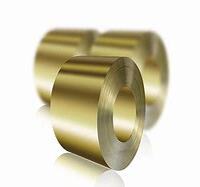
(Copper Flat Bus Bar / Copper Rod / Copper Bar)
